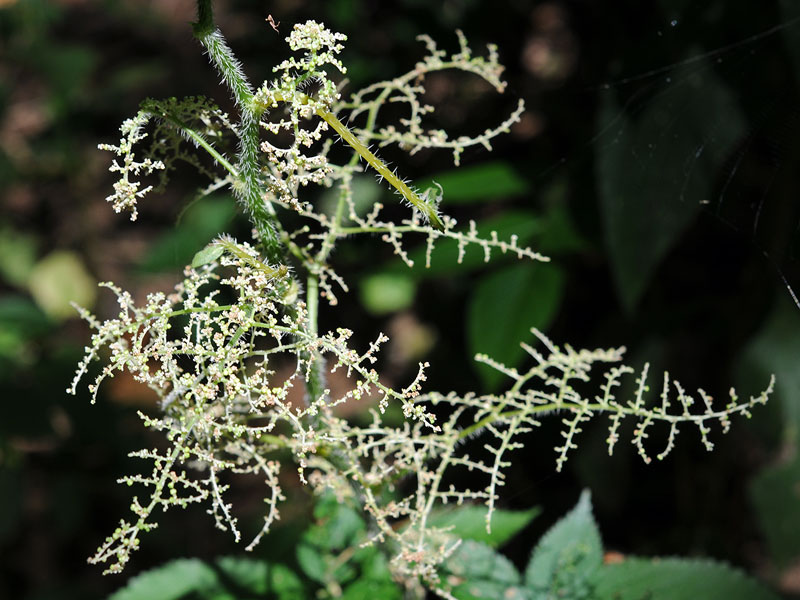
| Photos: Kim Hosen, Merrimac Farm, August 2008 |
Stinging Nettle Nettles, or Urtica dioica, is often found in the wild near creek beds whose soil is moist, fertile, fine and nitrogen-rich. Its rhizomes and stolons are yellow, as are its roots. The plant has rigid, heart shaped leaves and produces greenish male and female flowers. The male flowers often appear in racemes and the females in clusters. It is an important larval food source for butterflies and some moths. In the garden it can be used to attract beneficial insects. But be careful! Mature nettle plants are covered with stinging hairs on their leaves that can cause severe dermatitis (a stinging rash) if you touch them. Wear gloves if you harvest them from your garden. Rich in Nitrogen, it can be used as a great compost activator. Versatile in healing and rich in minerals, this plant has a long history of use as medicine and as a food source. It has been used historically by Europeans, Colonials, and Native Americans for soup, tea, arthritis, weight loss, vitality in pregnancy and to increase mothers' milk while breastfeeding. When cooked it has a flavor similar to that of spinach. From historical to contemporary times this plant's fibers have also been used for textiles and dyes. One of its many advantages is that it can grow easily without the use of pesticides. |






